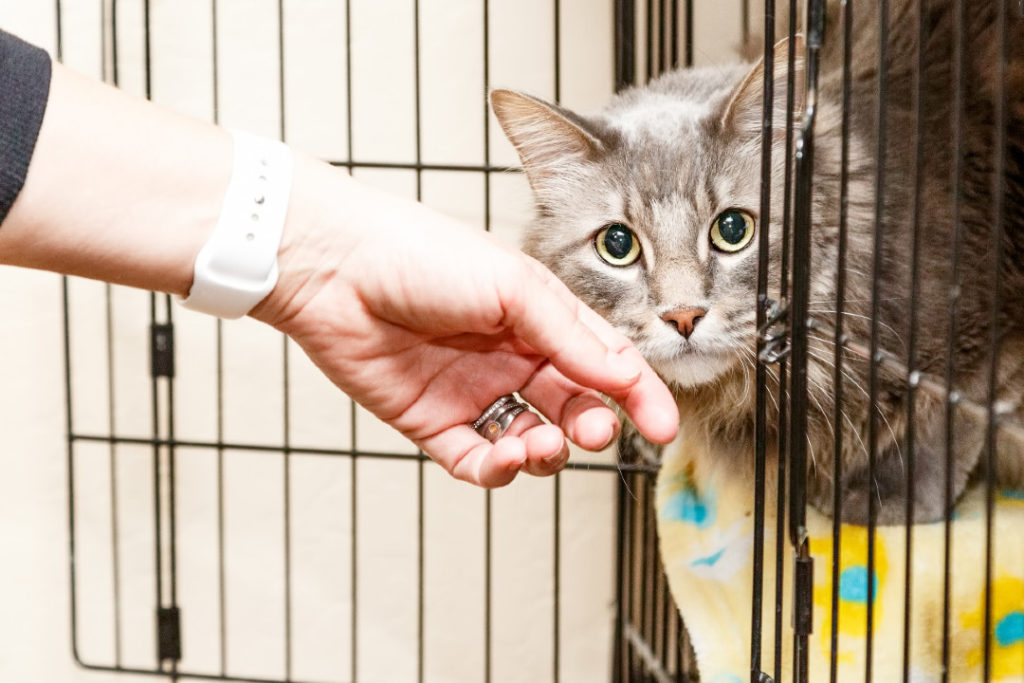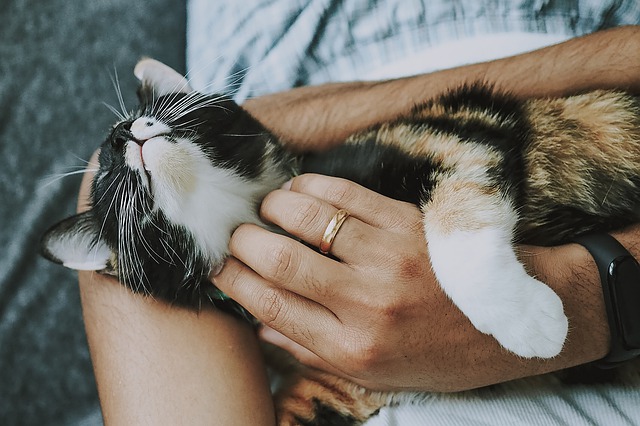Hello, and welcome to the wonderful world of cats. Whether you’re a longtime cat lover or a potential new convert, adopting for the first time can be daunting.
It’s a responsibility to introduce an animal into your life. Although people like to think of cats as independent, low-maintenance creatures, they still value affection and attention, and diligent care as your pet.

What to Consider When Adopting a Cat
There are three parts to every kitty cat equation: You, the cat, and the home.
What Cat is the Perfect Match For You?
Despite what the haters say, cats are not a monolith. Each one has plenty of personality and their own quirks, so you need to find one that matches your way of life.
- Some are cuddly lap cats who’ll follow you around the house and beg to be pet. They make an excellent homebody companion.
- Others may not like too much handling but will quite enjoy play sessions and make sure they’re sleeping near you whenever possible. These guys might do well on a schedule and get a rhythm for quality time together versus quiet time.
- Overall, you should keep in mind their temperament (cranky? easygoing?), level of activity (lazy? extra steam to burn?), and willingness to engage (affectionate and playful? aloof but approachable?). What feels most important when you imagine your life with a new feline friend?

The best way to adopt the right animal? Get an older cat rather than a kitten.
Adult cats have already grown into individuals with specific traits and preferences, but these might not be set in stone — pets, like people, continue to change over time. You’ll be able to observe and evaluate them by spending time with the cat before adoption.
- Many rescue organizations have free roam rooms where you can socialize with adoptable cats.
- For shelters without, you can usually still ask for some one-on-one time.
- If a previous owner gave up some poor kitty, there should be even more details about them on file.
On the other hand, most kittens are similar. They’re naturally rambunctious, curious, and a little clumsy. A few are shy and quiet, but even they can grow up to surprise you with a new personality.
Regardless of their unpredictability, you should only consider adopting a kitten if you’re ready to help raise a young animal into adulthood. It takes extra patience and diligence, so it shouldn’t be taken lightly. But the payoff is a longtime companion with whom you share a special bond.
Finally, consider how many cats you’d be willing to bring home. In most cases, people go looking for a single cat — but sometimes they fall in love with a cat who’s part of a bonded pair. You should never aim to break up a loving couple. Some cats also just prefer playmates to solitude. If you truly have your hard limits, find the perfect match who’ll thrive and be happy in the home you can provide.
How to Make Your Home Welcoming
Visit the Vet for a Check-Up
Cats can become moody and withdrawn when you first bring them home, so it’s important to be sure they aren’t unwell in any other way. You’ll also want to screen for communicable diseases if the adoption agency did not.
Should you need additional procedures or shots, you can also get your future appointments set up.
Cat-Proof Plus Cat-ify
There’s a lot in this new place for a cat to sniff, eat, knock over, chew on, and fall off of. Take a look around and remove temptations, precarious situations waiting to happen, and susceptible fragile objects.
Familiarize yourself with the common no-nos like household cleaners and certain plants and foods that are toxic for cats.
But it isn’t all about taking away. Don’t forget to put in at least one addition cats will love — like cat climber towers, window hammocks, or wall-mounted perches. They may not see the use right away, but they’ll be valuable personal spaces as your cat warms up to your home.
Start Small
Try not to introduce your new cat to your entire home at once. This is especially important if you have many inhabitants or other pets.
Start with a smaller enclosed space they can live out of for a week or so, like a bedroom or utility room. Deck it out: provide food and water, the litter, toys, and a scratcher, and spend plenty of time hanging around in there, too.
Also, leave the carrier they came home in. Keep it accessible and comfortable — they’ll likely curl up in there rather than a new bed.
Take It Slow
It takes a bit of time for many cats to acclimate. Don’t rush them, and don’t be discouraged when your new pal doesn’t seem quite like themselves yet.
By the same token, don’t start introducing all your friends and family when the little guy hasn’t even gotten to know you and their surroundings.
Each cat is different. Some may take to you right away, and others may seem like they don’t want to bond at all.
They are simply stressed and a little frightened, so treat them with patience and the utmost kindness. Keep hanging out, speaking aloud, and gently trying to play or share treats — they’ll come around as they begin to understand they’re safe here with you.
How to Get a Cat or Kitten
There’s no shortage of cats in this world. That doesn’t mean you should go grabbing any cat off the street, but it does mean you should definitely adopt, not shop.
- Even with adoption, you’ll still pay for your new cat. Prices may range from $15 to $200 in some cases, with most adoptions falling within the lower range.
- However, this helps cover the cost of vaccines and immunizations and can include things like a microchip or spaying/neutering. You pay upfront but don’t have to worry about these costs down the line. A small portion may also go towards supporting the adoption organization or program itself. Many rescue shelters rely on volunteers and donations.
- Pet stores aren’t entirely out of the question. Larger chains like Petco and PetSmart aren’t selling purebred kittens for profit. They partner with local shelters and rescues, using their stores and (web presence) to showcase animals looking for a good home.
- If you’re ever in doubt, simply ask. Someone doing adoptions will be happy to share that with you.
Even specific breeds have their own rescue and rehome organizations. Use all the online resources at your disposal: from tabby strays to Russian Blues, you can find local online listings or browse posted profiles from around the country.
Few organizations require a more formal process (such as a home check), but it can happen. If you’re adopting from a system where the cats live in foster homes, for example, they may want to vet you more carefully before releasing a cat into your permanent care.
For the most part, you’ll be able to bring the kitty home after answering a few questions and filling out some paperwork.
Day 1 Cat Essentials
In addition to what was mentioned above, here’s your checklist for the essential items you should have on hand before you get your new cat.
- Food and water bowls, along with appropriate wet and/or dry food (such as kitten food for little ones, a general adult mix for mature cats, or a senior formula for older cats)
- Litter box and cat litter (filled up a couple of inches)
- A secluded/covered bed or comfortable hidey-hole (In addition to the carrier they came home in, but maybe your cat is the outlier and wants a new nest straight away!)
- A cat brush (You probably won’t need it on day 1, but why wait? Cats love brushes, and it should help them feel that you’re grooming them for comfort.)
- Scratching pads or posts (They work best if you use multiple in different places, so your cat always has one nearby.)
- Some simple toys to try, unless you already know their favorites (laser pointer, feathers at the end of a stick, a length of rope or ribbon, catnip mice, a cat tunnel, etc.)
- Tasty treats to help praise and coax — crunchy ones are almost always a hit while softer treats may only appeal to certain cats (They could be excellent for an older adoptee, however.)
Takeaway
When you’re thinking of adopting a kitten or cat, make sure you’re ready and committed. As long as you think things through, adoption is as easy as visiting the local shelter, Humane Society, or chain pet store.
The hard part isn’t really how to adopt a cat — it is understanding and finding your perfect pet cat out there among all the world’s cats. And once the hard part is over, the fun parts begin.
